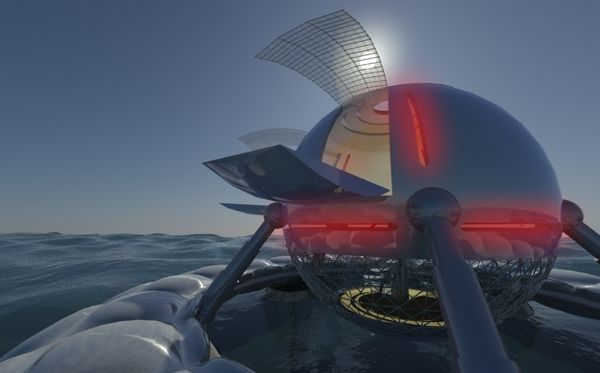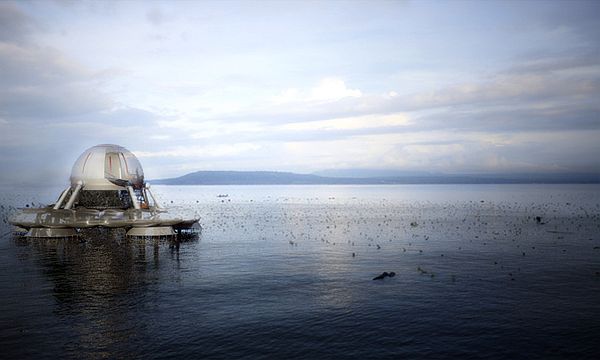
A very interesting data from The United States Department of Energy suggests that if algae fuel replaced all the petroleum fuel in the United States, it would require 15,000 square miles (39,000 sq km) which is only 0.42 percent of the U.S. area. This is less than one-seventh the area of corn harvested in the United States in 2000. Now going along the high potential of algae fuel as an alternate energy source (on an average they contain 60 percent of oil), the conception we will talk about here is not actually based in land. This design conceptualized by Andy Chang entails a floating pod being deployed the middle of a sea for collection of precious algae.

According to the designer, the project will allow researchers become a part of the algae environment. So, basically we will have a floating lab (pod) in a cavity, with a circular inflatable device covering around its base, and connected with conical cage like structures (for algae growth) that would drop beneath the surface of the sea along with their ballasts. The pod itself will be fabricated in 3 major sections, and can be assembled with the flotation device at a ship yard. The materials used for construction can be easily available and sustainable.

This pod with a capacity for 4 people will be used as a temporary habitable structure for scientists. It will comprise of a main shell, with integrated hydroponic gardens and well ventilated toilets. The platform around the shell will serve as an outdoor space with folding lab tables. But the most amazing feature of the pod will be that – it can submerge itself in the sea, through the base cavity, for the scientists to visually examine the algae environment.
What we can say is that it’s a novel and perhaps convenient concept from the perspective of gathering algae. But what about the adverse psychological factor of living in such confined space for longer periods of time?
Source: Behance




